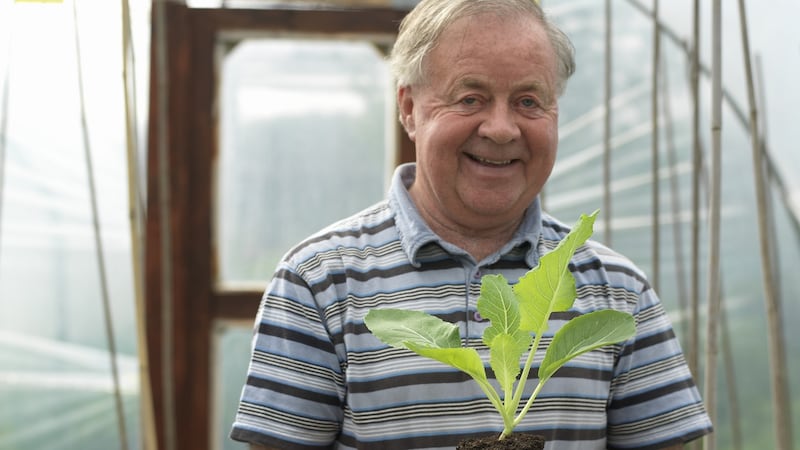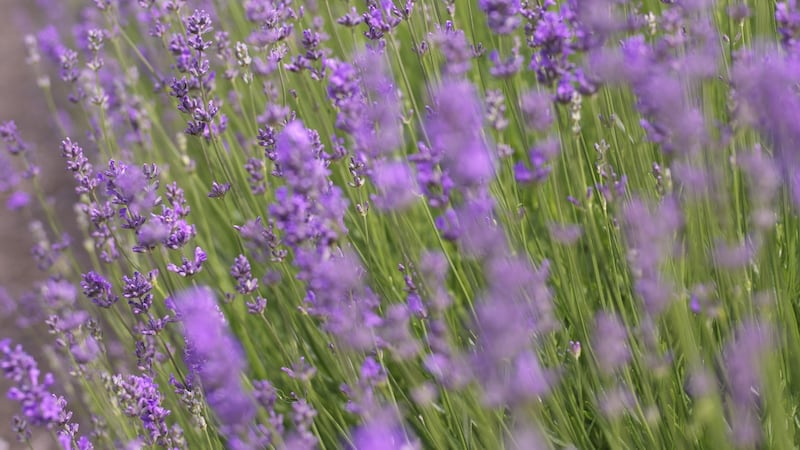Lines of neatly labelled vases filled with picture-perfect gladioli, roses and dahlias, vegetables arranged like Dutch still lifes, polished jars of homemade pickles, jams, honey and chutneys . . . there are surely few things in the world of Irish gardening more nostalgia- (and envy-) inducing than a traditional horticultural show.
Held in village halls around the country and attracting some of the best and most competitive growers, these are the events where the smallest blemish on a vegetable, fruit or flower is enough to lose its owner a prize.
It’s on their show benches that you’ll see giant marrows, perfect trusses of glossy tomatoes, and cauliflowers with curds of snow-white perfection, all grown by Irish gardeners. Even just the smell of one of their colourful displays – typically a heady blend of floral and vegetable notes, combined with a sweet whiff of honey and fruit – is enough to conjure up images of a gentler age.


One of the country's most seasoned participants when it comes to such shows is the north Dublin-based gardener John Warren, whose competitive year kicks off in late May and continues until late September in a whirl of horticultural events.
In an average year, he takes part in 15-16 different Irish horticultural shows, skilfully timing the propagation of each exhibit (he also grows vegetables) so that they’re in peak condition when required. Ireland’s reigning sweet-pea champion, he won the title for the fourth year in a row this summer at the Rush Horticultural Show.
Another well-known competitor, also based in north Co Dublin (an area with a long tradition of competitive growers), is Christopher White, the Irish gardener famed for his extravagantly beautiful dahlias.
White, who has won several medals at the annual RHS Chelsea Flower Show for his floral displays, has got the knack of growing and exhibiting these sumptuous, late summer blooms down to a carefully-timed art.
So protective is he of his flowers that they travel to shows in cages ingeniously constructed out of milk crates and clothes pegs. This way, not even a single petal runs the risk of being bruised.
But even John Warren and Christopher White's long involvement in the art of competitive growing can't match that of the Laois-based nonagenarian Harold Lawlor, who's been exhibiting and judging at these traditional shows since he was a schoolboy.
Lawlor has passed his love of competitive growing on to his son Martin and grandson Colin, who also regularly participate in shows around the country.
But while Warren, White and the Lawlor family all belong to a tradition that harks back to the Victorian era, some say the skill required to grow and stage these exhibits is a dying art.
Certainly, it’s true that the numbers of gardeners competing isn’t what it used to be. When Warren first started exhibiting some 40 years ago, for example, each competitive class attracted something between 15-20 exhibitors. “Now you’d be lucky to get something like four-five.”
That said, there are some small but definite signs of a revival. An example is the increasing number of Irish gardeners growing sweet-pea flowers for competitive exhibit- a result, says Warren, of a recent initiative instigated by the late expert Irish grower, John Markham, who persuaded the country's most seasoned exhibitors to mentor a younger generation of amateur enthusiasts. "The results are really impressive."
Another hopeful sign is the welcome revival of the Totally Terrific Tomato Festival, an Irish horticultural show dedicated to one of the quintessential fruits of summer.
After a hiatus of a few years, it's now found a new home in Killruddery House in Co Wicklow; this year's event, which takes place at the beginning of next month, includes a talk on the history of tomato cultivation by Matthew Jebb, director of the National Botanic Gardens, as well as a mouth-watering exhibit of many rare and unusual varieties grown by expert Irish kitchen gardeners including Nicky Kyle, Madeline McKeever and Tanguy de Toulgoët.
Yet another recent addition to the calendar is the Phoenix Park Honey Show, also being held next month. Beekeeping and gardening naturally go hand in hand; I found last year’s event absolutely fascinating in terms of how discovering more about how the colour and flavour of honey is so heavily influenced by the species of flowers from which the bees have been feeding.
My advice? Do, if you get a chance, try to pay some of these traditional shows a visit over the coming weeks.
Not only are they a wonderfully atmospheric distillation of horticultural skill, but they’re also a fantastic opportunity to pick the brains of some of the country’s greatest gardeners. See garden.ie for a comprehensive listing of the different shows taking place around the country
This week in the garden
Disbud dahlias If you want your dahlia plants to produce large flowers with long stems suitable for cutting, then it's important to regularly disbud them. To do this, examine the tips of the plant's stems for young flower buds, which typically appear in a cluster of three. Using your finger and thumb, gently pinch out the two smaller buds so just the largest central bud remains.
Lop lavender Late August is an excellent time to prune English lavender, the aromatic, silver-leafed plant . To do this, use a very sharp shears to cut away the faded flowers and about 5cm of the current year's growth. This will keep the plant nicely bushy and prevent it from becoming too woody.
Vent the glasshouse Watch out for signs of botryrtis, a common fungal disease that often appears in glasshouse/ polytunnel grown plants at this time of year, causing a fuzzy grey mould to appear on plants. Reduce the risk by making sure your glasshouse/ polytunnel is kept well ventilated, only watering/ pruning in the morning, and being extra vigilant when it comes to good garden hygiene by regularly removing dead or damaged leaves/ flowers/fruit.
Dates for your diary
'Dahlia Celebration' continues until the end of August at June Blake's garden, Blessington, Co Wicklow. There will be a talk by Blake on growing dahlias from seed on Sunday August 28th at 2pm; see juneblake.ie
Saturday, September 3rd (2.30-4.30pm) , at St Nessan's Community School, Moyclare Road, off Warrenhouse Road, Baldoyle, Dublin 13. Howth & Sutton Horticultural Society's Autumn Show, entries welcome; see hshs.ie
Sunday, September 4th 'The Totally Terrific Tomato Festival' takes place in Killruddery House, Co Wicklow, entries very welcome; see killruddery.com
Sunday, September 4th The annual Balbriggan Horticultural Show takes place in Balbriggan Community College, Balbriggan, Co Dublin, and will include a wide range of competitive exhibits











